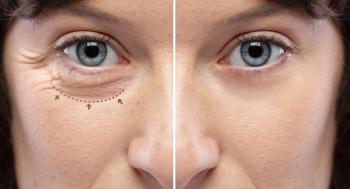
Low-dose mitomycin-C safe in treating, preventing haze associated with surface ablations
Refractive surgeons can safely and effectively use a single application of low-dose mitomycin-C to treat or prevent corneal haze and scarring associated with surface ablations, according to Capt. Steven C. Schallhorn, MD, who spoke at the Hot Topics Symposium during the American Society of Cataract and Refractive Surgery annual meeting.
Refractive surgeons can safely and effectively use a single application of low-dose mitomycin-C to treat or prevent corneal haze and scarring associated with surface ablations, according to Capt. Steven C. Schallhorn, MD, who spoke at the Hot Topics Symposium during the American Society of Cataract and Refractive Surgery annual meeting.
In the past, this powerful DNA inhibiting anti-cancer agent, mitomycin C, has been used as systemic therapy as well as for ocular treatments, including prevention of scarring after trabeculectomy, prevention of pterygium recurrence, and as an adjunct for treating conjunctival neoplasms. There have been serious ocular complications reported with its use, including stromal necrosis, scleral necrosis, conjunctival fibrosis, and others.
"There are certainly potentially devastating complications from the use of mitomycin-C in this regard," Dr. Schallhorn reported.
However, in a review of the literature, Dr. Schallhorn of the Naval Medical Center, San Diego, found 28 papers on the prophylatic and therapeutic use of mitomycin-C in refractive surgery.
"There were no serious complications of mitomycin-C in more than 750 patients reported in the refractive surgery literature," he said. "Anecdotal and community experience with mitomycin-C has been very positive. Many surgeons are using it both to prevent and treat corneal haze and scarring. To date, I know of no serious complications anecdotally."
However, researchers do not understand the dose-response curve using this drug and more surgeons are using a lower dose for a shorter duration, Dr. Schallhorn said.
"Dosing has changed from intense dosing to lower concentrations over the years. It has gone from topically applied drops used for days or weeks down to low concentrations of mitomycin-C applied for just a few seconds. That is certainly the trend in the literature," he said.
The longest reported follow-up with mitomycin-C use in refractive surgery has been 3 years, he said.
Newsletter
Don’t miss out—get Ophthalmology Times updates on the latest clinical advancements and expert interviews, straight to your inbox.









































